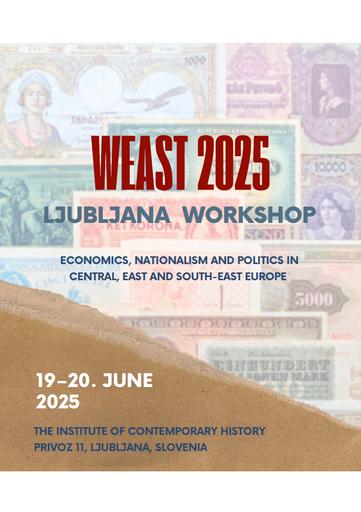/
Dogodki
/
Konference
The dramatic rise and fall of southeastern European gender inequality over the past three millennia


To delo avtorja Jörgen Batten je ponujeno pod Creative Commons Priznanje avtorstva-Nekomercialno-Deljenje pod enakimi pogoji 4.0 Mednarodna
Datoteke (1)
Opis
We study the development of gender inequality in Southeastern Europe during the last three millennia using bioarchaeological and anthropometric methods, in comparison to other European regions. Potential explanations are discussed that might. We measure gender inequality using the relative femur length and enamel hypoplasia shares of human skeletons that were excavated in archaeological sites. For southeastern Europe, we can mobilise a sample of more than 3,000 skeletons and we combine this with later evidence about the anthropometric development of the last three centuries. Enamel hypoplasia is an indicator for malnutrition and poor health during early childhood and the ratio of this indicator (as well as the ratio of femur length) between females and males allows to trace gender inequality over many centuries. Burial selectivity and other biases are intensively assessed in this study. We observe that gender inequality increased dramatically in southeastern Europe during the second half of the first millennium CE. We assess potential explanations. Given that this development also applies to Christian regions of southeastern Europe, the rise of the Islamic religion itself is not a likely explanation. Epidemic diseases, culture, climatic change, forced and voluntary migration, and changing agricultural, industrial, and tertiary specialisation patterns are assessed as potential correlates.
Metapodatki (12)
- identifikatorhttps://hdl.handle.net/11686/71118
- naslov
- The dramatic rise and fall of southeastern European gender inequality over the past three millennia
- avtor
- Jörgen Batten
- soavtor
- Matthias Morys (mod.)
- predmet
- spol
- neenakost
- jugovzhodna Evropa
- opis
- We study the development of gender inequality in Southeastern Europe during the last three millennia using bioarchaeological and anthropometric methods, in comparison to other European regions. Potential explanations are discussed that might. We measure gender inequality using the relative femur length and enamel hypoplasia shares of human skeletons that were excavated in archaeological sites. For southeastern Europe, we can mobilise a sample of more than 3,000 skeletons and we combine this with later evidence about the anthropometric development of the last three centuries. Enamel hypoplasia is an indicator for malnutrition and poor health during early childhood and the ratio of this indicator (as well as the ratio of femur length) between females and males allows to trace gender inequality over many centuries. Burial selectivity and other biases are intensively assessed in this study. We observe that gender inequality increased dramatically in southeastern Europe during the second half of the first millennium CE. We assess potential explanations. Given that this development also applies to Christian regions of southeastern Europe, the rise of the Islamic religion itself is not a likely explanation. Epidemic diseases, culture, climatic change, forced and voluntary migration, and changing agricultural, industrial, and tertiary specialisation patterns are assessed as potential correlates.
- založnik
- Inštitut za novejšo zgodovino
- datum
- 20. 06. 2025
- tip
- video
- jezik
- Angleščina
- jeDelOd
- pravice
- licenca: ccByNcSa
